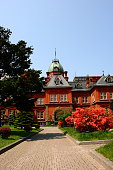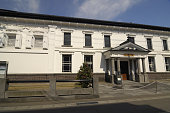
Speakeasy
Speakeasies are hidden bars or nightclubs that emerged during the Prohibition era within the United States, from 1920 to 1933. These institutions were recognized for serving alcoholic drinks illegally and often required a secret password for 오피 entry.

Here are some key features of speakeasies:
- Secrecy: Many speakeasies were disguised as legitimate companies or situated in basements and again rooms.
- Atmosphere: They often had a comfy, intimate vibe with dim lighting, classic furnishings, and jazz music, creating a singular and nostalgic experience.
- Creative Cocktails: Bartenders at these venues would develop ingenious drinks, utilizing whatever ingredients had been obtainable, which laid the groundwork for modern mixology.
Today, the term “speakeasy” has made a comeback as many bars and restaurants embrace this nostalgic theme, providing distinctive cocktails in a retro-style setting. Here are some the cause why they remain well-liked:
- They present a sense of exclusivity and adventure.
- Their atmosphere usually encourages social interplay and connection.
- The thrill of discovering hidden gems in cities adds to their allure.
In summary, speakeasies are a celebration of historical past and creativity within the cocktail culture, making them a beloved selection for nightlife lovers.
A speakeasy is a secretive or illicit bar that became well-liked during the Prohibition period in the United States, which lasted from 1920 to 1933. These institutions have been designed to serve alcohol despite the legal restrictions imposed by the 18th Amendment.
Here are some key factors about speakeasies:
- Origins: The time period “speakeasy” is believed to have originated from patrons speaking quietly or “easily” to keep away from detection by legislation enforcement.
- Hidden Locations: Many speakeasies were disguised as legitimate businesses, such as soda shops, or located behind false storefronts.
- Secret Codes: Customers typically needed to know a password or phrase to achieve entry into these clandestine venues.
- Unique Atmosphere: Speakeasies usually offered a lively ambiance, that includes jazz music and dance, reflecting the cultural significance of the Roaring Twenties.
Today, the time period “speakeasy” is used to explain fashionable bars that replicate the secretive appeal and vintage type of those historical establishments. Many up to date speakeasies emphasize craft cocktails and a unique, intimate ambiance.
In conclusion, speakeasies stay an interesting part of American history, symbolizing rebellion towards restrictive laws and the cultural shifts of the early twentieth century.
Speakeasies are clandestine bars or clubs that turned in style through the Prohibition era in the United States, which lasted from 1920 to 1933. These establishments have been recognized for their secretive nature, often hidden behind unassuming storefronts or requiring a password for entry.
The term “speakeasy” is believed to have originated from patrons who would speak quietly or “simply” when ordering drinks to keep away from detection by regulation enforcement. Speakeasies usually featured live music, dancing, and a vibrant atmosphere, making them a focal point of social life throughout a time when the sale of alcoholic beverages was illegal.
Today, the term is used to describe trendy bars that evoke the appeal and secrecy of those historical venues. Many up to date speakeasies pay homage to the previous, offering artistic cocktails and a unique ambiance, often reminiscent of the jazz age.
